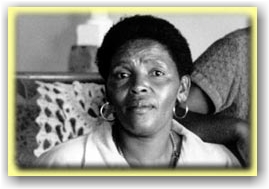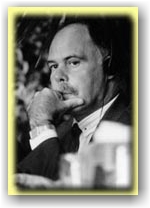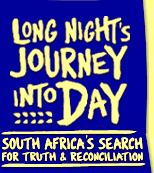 This story explores the TRC process from the perspective of a perpetrator who has applied for amnesty.
This story explores the TRC process from the perspective of a perpetrator who has applied for amnesty.
As a young Afrikaner man, Eric Taylor was recruited into the South African Security Police. Firmly believing in the need to fight the communist threat, he excelled in his work.
As he moved up through the ranks, he was ordered to carry out increasingly violent tasks. Ultimately, he was required to kill enemies of the state.Now a deeply religious man who believes apartheid was wrong, he is tormented by his violent involvement in upholding the apartheid system.
In 1998, in testimony before the TRC, Taylor tells of a night in 1985, when he and other members of the special forces intercepted four United Democratic Front (UDF) activists who were driving from a meeting in Port Elizabeth to their homes in the small town of Cradock.
The activists were murdered, and their burned bodies left in the bushes alongside the road. At the time, the police, describing the incident to the public and the grieving families, declared that a rival anti-apartheid political group was responsible.
In order to come to peace with his past, Taylor feels that he must be forgiven by the families of the murdered activists. He welcomes his amnesty hearing as an opportunity to publicly tell his story, but he needs a more complete resolution.
 In early 1997, Taylor and his Dutch Reform Church minister initiated a meeting with the families of the four murdered activists, seeking not only reconciliation but redemption.
In early 1997, Taylor and his Dutch Reform Church minister initiated a meeting with the families of the four murdered activists, seeking not only reconciliation but redemption.
The families were not ready to forgive him, and waited to hear his full disclosure at the amnesty hearing so they could finally learn what it was that happened on the night of the murders.
We follow Taylor and the families through the hearing and for a year afterwards. In particular, we focus on the connection between Taylor and Nomonde Calata, the widow of the man Taylor was directly responsible for murdering. In an attempt at resolution, the two hope to meet again: Taylor wants to again ask for forgiveness. Calata, who was 8 months pregnant when her husband was killed, wants to show Taylor a photo of her daughter, who has grown up without a father, so that he can more fully understand the impact of his crime. As Taylor and the families sort through their brutal interconnected past, we witness the possibilities and limits of forgiveness and reconciliation.





